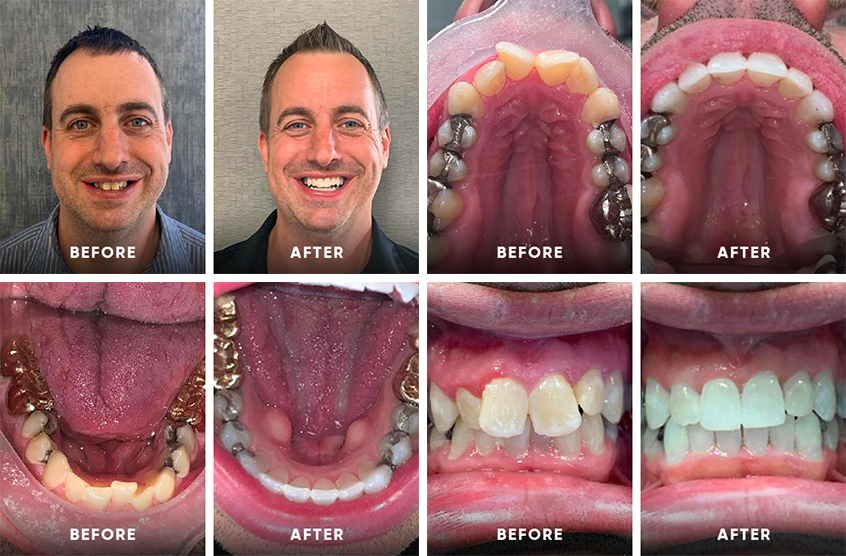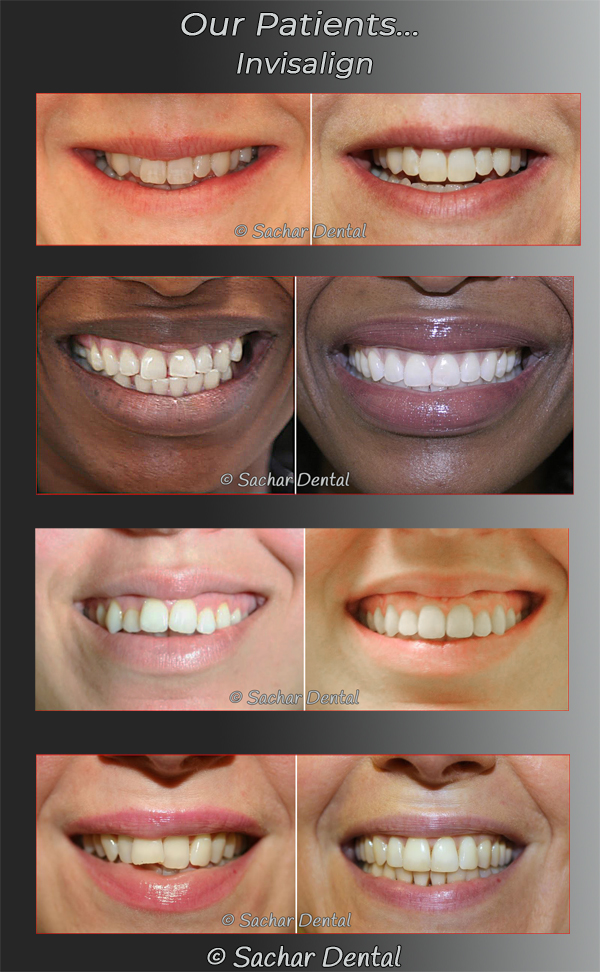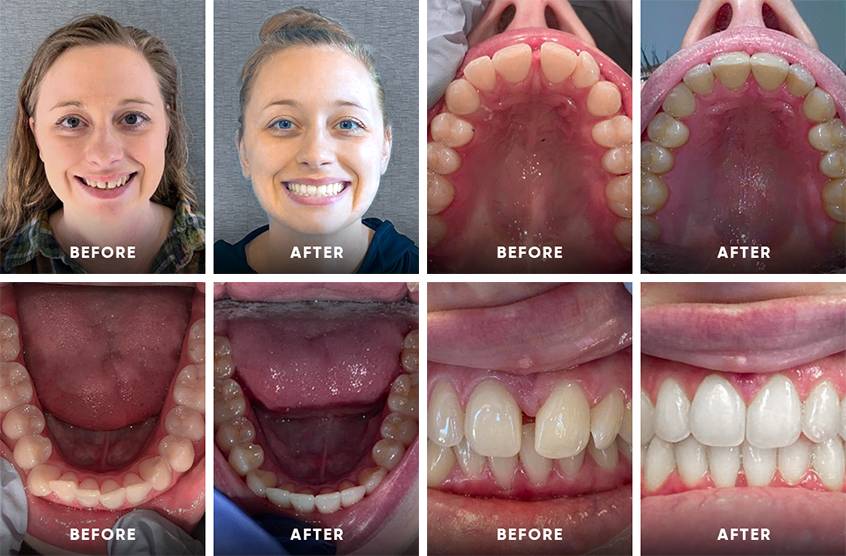Frequently Asked Questions Concerning Invisalign: Everything You Need to Know
Frequently Asked Questions Concerning Invisalign: Everything You Need to Know
Blog Article
Invisalign vs. Standard Dental braces: Which Alternative Is Right for You?
When considering orthodontic treatment, the option in between Invisalign and standard dental braces offers numerous important factors that merit cautious examination. Invisalign supplies a very discreet choice with detachable aligners, while typical dental braces provide a more visible yet effective solution for severe misalignment. Each option incorporates distinctive advantages and downsides associated with aesthetic appeals, comfort, treatment duration, and cost. Recognizing these subtleties is critical for making an educated choice that lines up with your personal preferences and way of living. The question remains: which option will ideal fulfill your orthodontic demands and expectations?
Summary of Therapy Alternatives

In contrast, traditional dental braces include steel brackets and cords that are adhered to the teeth. This technique applies continual pressure gradually to achieve positioning. While reliable for complicated orthodontic concerns, standard braces require regular brows through for adjustments and can present obstacles in keeping oral hygiene due to the problem of cleaning up about cords and braces.
Both options have their benefits, and the option commonly rests on particular oral problems, way of life choices, and patient conformity. Ultimately, seeking advice from an orthodontic specialist is crucial for identifying the most suitable treatment plan tailored to specific demands. Recognizing the subtleties of each alternative can dramatically affect the general success of orthodontic therapy.
Aesthetic Considerations
A significant factor affecting the selection in between Invisalign and standard braces is the aesthetic allure each therapy uses. Invisalign aligners are crafted from clear plastic, making them essentially unnoticeable when worn. This discreet look is especially appealing to adults and teens that may feel self-conscious concerning their orthodontic therapy. The ability to maintain an all-natural smile throughout the positioning process can significantly boost the client's confidence in expert and social settings.
On the other hand, typical braces contain metal braces and wires, which can be extra visible. While innovations in orthodontic innovation have actually resulted in the development of smaller braces and colored elastics, standard dental braces still preserve an even more conspicuous profile. For some individuals, the visibility of dental braces might discourage them from looking for necessary treatment.
Inevitably, the choice between Invisalign and typical braces may pivot on individual preferences relating to looks. People who prioritize discernment often lean toward Invisalign, while those that are much less concerned about exposure might decide for conventional braces. Recognizing the visual implications of each option is vital for making an educated decision that aligns with one's lifestyle and preferences.
Comfort and Convenience

In terms of convenience, Invisalign aligners are detachable, making it possible for clients to enjoy their favored foods without limitation and maintain optimum dental hygiene. Cleaning and flossing are simplified, as the aligners can be taken out throughout these routines, whereas traditional dental braces need careful steering around cables and brackets.
In addition, Invisalign's modern system permits less orthodontic check outs. Clients generally receive numerous sets of aligners simultaneously, review which can enhance the treatment process and reduce time invested in the orthodontist's chair. On the other hand, typical braces demand normal adjustments, making them less hassle-free for those with hectic timetables. Invisalign. In general, the convenience and comfort of Invisalign make it an appealing option for several individuals looking for orthodontic therapy.
Treatment Duration and Efficiency
While both Invisalign and typical braces work in dealing with dental misalignments, the duration of treatment can differ significantly between the two alternatives. Generally, Invisalign treatment can take anywhere from 12 to 18 months, relying on the intricacy of the instance. The clear aligners work by gradually moving teeth into their preferred placements, and normal follow-ups with an orthodontist help guarantee development continues to be on course.
In contrast, traditional braces typically need a longer commitment, normally ranging from 18 months to 3 years. This is because of their set nature and making use of cables and brackets, which can be much more effective for serious misalignments and complex cases (Invisalign). The therapy performance of typical dental braces is well-documented, as they enable for exact modifications and higher control visit this page over tooth motion
Ultimately, the choice in between Invisalign and typical dental braces might rest on both the anticipated treatment duration and the details oral issues handy. Consulting with an orthodontist is essential, as they can supply customized suggestions based upon private requirements, making sure the selected technique lines up with preferred timeframes and outcomes.
Expense Comparison and Insurance Coverage Choices
Cost plays a considerable duty in the decision-making procedure for people taking into consideration orthodontic therapy, whether selecting Invisalign or standard braces. On average, the expense of Invisalign varieties from $3,000 to $8,000, while traditional braces generally cost in between $2,000 and $6,000. Factors affecting these costs consist of the complexity of the instance, the duration of therapy, and geographical location.
Numerous oral insurance plans supply partial coverage for orthodontic treatments, however the specifics can differ extensively. Usually, traditional braces may be a lot more regularly covered by insurance plans compared to Invisalign, which some insurance companies classify as an aesthetic treatment.
In addition, numerous orthodontic techniques offer flexible layaway plan, making both treatment options much more easily accessible. People need to ask about possible funding alternatives and price cuts for ahead of time settlements. Reviewing the complete expense, consisting of insurance coverage benefits and repayment plans, is important for making a notified decision that aligns with both visual choices and budget plan considerations.

Verdict
In recap, the option in between Invisalign and conventional braces rests on numerous variables, consisting of visual choices, comfort, treatment period, and expense. Invisalign provides a discreet, detachable alternative that assists in oral hygiene and nutritional versatility, while conventional braces might be better for complex oral problems and typically come at a reduced cost point. Inevitably, appointment with an orthodontist is vital to evaluate individual conditions and figure out the most ideal treatment alternative for accomplishing optimal oral alignment.
When taking into consideration orthodontic therapy, the choice in between Invisalign and traditional dental braces presents numerous essential variables that merit mindful examination.Comparing Invisalign and standard braces exposes unique treatment alternatives for orthodontic modification.While both Invisalign and standard braces are efficient in remedying oral misalignments, the period of treatment can differ considerably in between the two choices.Price plays a considerable duty in the decision-making process for individuals taking into consideration orthodontic treatment, whether choosing for Invisalign or typical braces.In summary, the selection in between Invisalign and conventional dental braces pivots on multiple elements, consisting of visual preferences, comfort, therapy period, and price.
Report this page